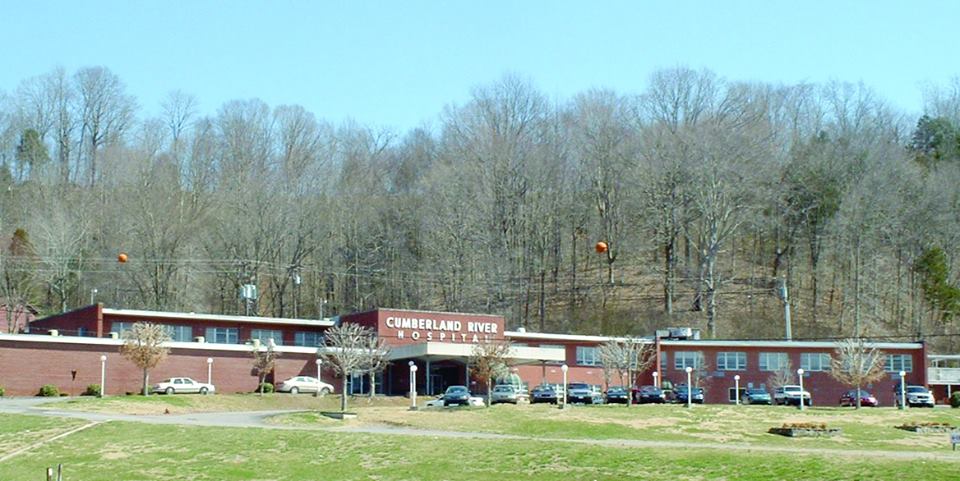By Michelle Price
UCBJ Managing Editor
CELINA – The decision to close Celina’s Cumberland River Hospital (CRH) effective March 1 ultimately came down to three major factors: declining reimbursements from all payers, increased operating costs, and decreasing patient volume. Officials at Cookeville Regional Medical Center (CRMC), which has owned CRH since 2012, analyzed these factors for months before determining the facility had to close.
“We have worked on this for well over a year, trying to come up with ways to make this facility financially stable and work,” said CRMC CEO Paul Korth. “We looked at what we could do up there besides a hospital. Could we keep the emergency room open? Could we do an urgent care clinic with extended hours? And everything we looked at came up with a financial loss and would not be able to sustain operations.”
Although CRMC has invested over $12 million in cash since 2012, CRH was unable to financially stand on its own. In the last five years, CRH has had only one year that realized a profit. In each of the other years, the net loss was over $1 million, with a total loss of over $5.5 million since FY15.
One reason for this is declining reimbursements from payers.
“Cumberland River has seen these significant financial losses basically due to decreased payments from all payers,” Korth explained. “Medicare has reduced payments, BCBS (Blue Cross Blue Shield) has, basically any insurance company. We’ve seen decreases in reimbursements from all our payers.
“We continue to see increases in our costs. Our supply costs. Our drug costs. Our drug costs are going up in double digits every year. And the cost of operating in terms of salary wages and benefits has gone up significantly year over year.”
Drug costs are increasing exponentially. A congressional report titled, Manufactured Crisis: How Devastating Drug Price Increases Are Harming America’s Seniors, looked at rising drug costs.
The report examined the costs of the 20 most-prescribed drugs under the Medicare Part D program from 2012 to 2017. It found that the drug Nitrostat, used to relieve chest pain, had increased the most: a percentage change of 477 percent.
Zostavax, prescribed for shingles among seniors, had the lowest percentage increase but was still high: 31 percent over five years.
Twelve of the 20 drugs saw their prices increase by more than 50 percent over the five-year period and six had price increases of over 100 percent, the report found.
Since the majority of CRH’s patients were geriatric psychiatry and skilled nursing patients, these drug increases impacted the hospital at a higher rate than they would a larger hospital with a more diverse patient base.
Payroll and benefits also were a large hit to the hospital’s bottom line. CRH has over 100 full-time employees and 46 part-time workers. The annual payroll for the hospital is $6 million dollars.
While decreasing reimbursements and increasing costs created difficulties, the main issue that could not be overcome was the decreasing patient volume.
CRH provides many services including acute care and an emergency room. They have a lab, outpatient physical therapy, x-ray, CT, ultrasound, respiratory therapy, a geri-psych unit and a skilled nursing unit.
While CRH can provide many of the services a patient would need, they do not perform surgeries or deliver babies.
Patient numbers have been steadily decreasing over the years largely due to local doctors referring their patients elsewhere.
In an interview with the Celina Citizen-Statesman, Korth said, “This community probably needs about three physicians, which we have three physicians in the community, but you need three physicians in the community that support the hospital and send their patients here for tests and procedures and also inpatient care. We don’t have those three. Not all of them do that here. Dr. Copeland has been very supportive of the hospital and has always been, but our patient census has been very low.”
Over the last year the average daily inpatient census for acute care, geri-psych and skilled nursing is about 11 patients, of which only 2.5 are in acute care.
The emergency room averages 14 patients a day with 1.5 of those coming in by ambulance. Clay Fire EMS reported that in 2018 just over 60 percent of their runs going to CRH with the remainder going to Livingston Regional Hospital, Macon General Hospital, Monroe County (KY) Medical Center or Cookeville Regional.
“You are looking at an area that has a declining patient population and we are seeing that effect at the hospital with declining patients that utilize that facility for medical purposes,” said Korth.
Korth has been actively looking for buyers for CRH for several months.
“It was never my intent to close the facility,” Korth explained. “We’ve been looking at potential buyers. We had identified buyers in the past, none of which have been able to secure financing to properly close on the deal. As of today, we are still talking to several of those individuals about what we can do as far as a plan not to close the facility.
“On Tuesday we contacted the buyer that was looking into government backed loans for the purchase and urged him now that the government was back open to see if he couldn’t speed up the process. Some of the prospective buyers that CRMC is working with have also contacted Sen. (Marsha) Blackburn’s office to request expedient processing of that but we shall wait and see what the outcome looks like.”
Waiting on buyers to arrange financing wasn’t something that the CRMC board was willing to do while the losses kept increasing.
“This was a difficult but necessary decision and action,” said Cookeville Mayor and CRMC board member, Ricky Shelton. “Cumberland River Hospital was purchased in 2012 and has consistently incurred large financial losses since the purchase, with CRMC supplementing funding to operate. These continued financial losses at Cumberland River Hospital are not sustainable and we cannot allow that to threaten the future of Cookeville Regional Medical Center. Cookeville Regional Medical Center is vital in providing healthcare to the city of Cookeville and the Upper Cumberland area.”
Now that the hard decision has been made, CRMC’s board is focused on getting the word out about the closure.
“We are trying to do it in a way that is a safe and smooth transition for the patient,” Korth said. “We are trying to make sure the patients are aware that March 1 this facility is going to close.
“I don’t want someone to pull up to the emergency room on March 5 and say, ‘well I didn’t know that this place closed.’ I think that’s very important from the standpoint of the patients and community so they can make alternative plans for their healthcare needs. We at CRMC will always be available for them,” added Korth.
See related story – Clay Co. leaders concerned over CRH closure.









